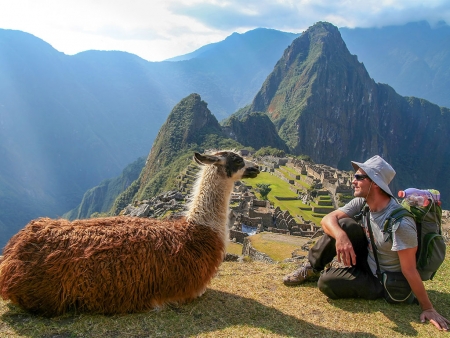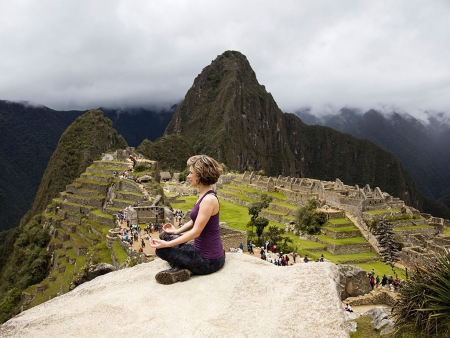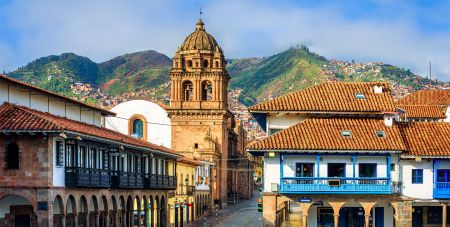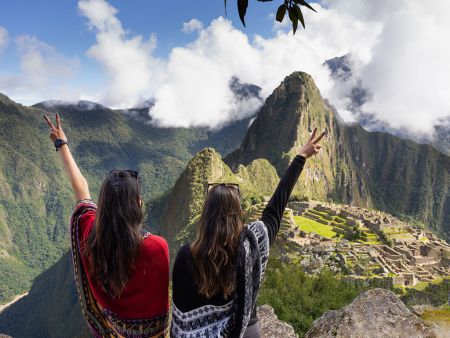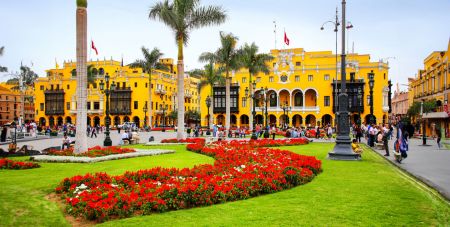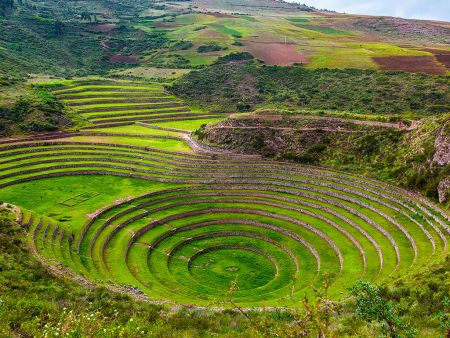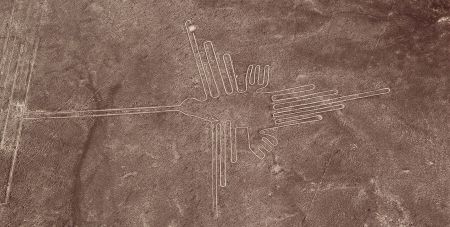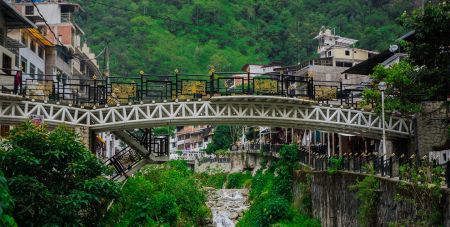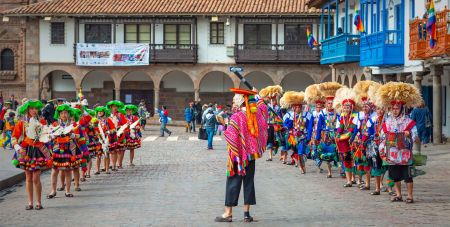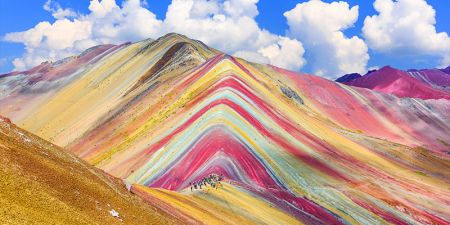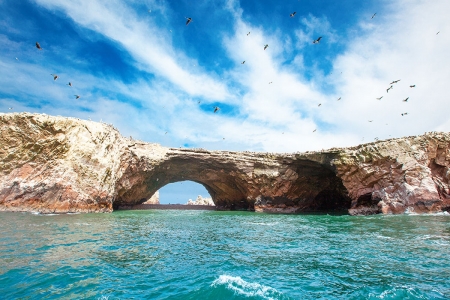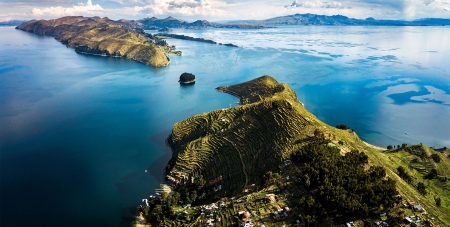Inti Raymi: The Glorious Inca Festival of the Sun
Celebrate the Majesty of Inti Raymi: Step into the heart of ancient Inca traditions with Inti Raymi, a captivating festival dedicated to the Sun God. Experience the vibrant pageantry, mesmerizing dances, and spiritual rituals that pay homage to Peru's rich cultural heritage. Discover the best ways to immerse yourself in this extraordinary event, from prime viewing spots to insider tips. Join us as we unravel the magic of Inti Raymi, an unforgettable celebration of history and tradition.
.jpg)
In the heart of South America, one can find a vibrant celebration that harks back to ancient times - the Inti Raymi, the Inca Festival of the Sun. This unique cultural event, held annually on June 24th, is a radiant spectacle, steeped in history, tradition, and spiritual significance. With its roots in the ancient Inca civilization, Inti Raymi is a fascinating blend of indigenous culture, Incan mythology, and Spanish influences.
The festival of Inti Raymi is a tribute to the sun god Inti, the most revered deity in the ancient Inca pantheon. Inti was believed to be the ancestor of the Incas and the provider of warmth and light, essential for the growth of crops. Today, Inti Raymi is a vibrant display of traditional music, dance, and rituals, attracting thousands of visitors from around the world.
The celebration of Inti Raymi is a testament to the enduring legacy of the Inca civilization. Despite centuries of Spanish colonization and the subsequent erosion of many ancient customs, Inti Raymi continues to be a significant part of Peruvian culture. It is a vivid reminder of the rich cultural heritage of the Inca people and their deep connection with the natural world.
The History of Inti Raymi
The origins of Inti Raymi can be traced back to the Inca Empire, which flourished in the Andean region of South America from the 13th to the 16th century. Under the rule of Pachacuti Inca Yupanqui, the ninth Sapa Inca, the festival of Inti Raymi was established as one of the most important celebrations in the Inca calendar. It was held at the winter solstice, marking the end of the harvest season and the beginning of the new agricultural cycle.
Inti Raymi was a grand affair, attended by the Sapa Inca (the emperor), nobles, and priests, along with thousands of common people. The festival was a time for feasting, dancing, and making sacrifices to Inti in the hope of securing a good harvest in the coming year. The rituals were performed at the Coricancha, the Temple of the Sun in Cusco, which was the spiritual and political heart of the Inca Empire.
However, with the arrival of the Spanish conquistadors in the 16th century, Inti Raymi, like many other indigenous traditions, came under threat. The Spanish authorities, seeking to convert the indigenous population to Christianity, outlawed the festival in 1535. Despite this, Inti Raymi survived in a subdued form, preserved by the indigenous communities in the Andean highlands. It was not until 1944 that Inti Raymi was revived in its full glory, thanks to the efforts of Faustino Espinoza Navarro, a Peruvian actor and playwright. Today, Inti Raymi is celebrated not just in Peru, but also in other parts of the Andean region, including Ecuador and Bolivia.
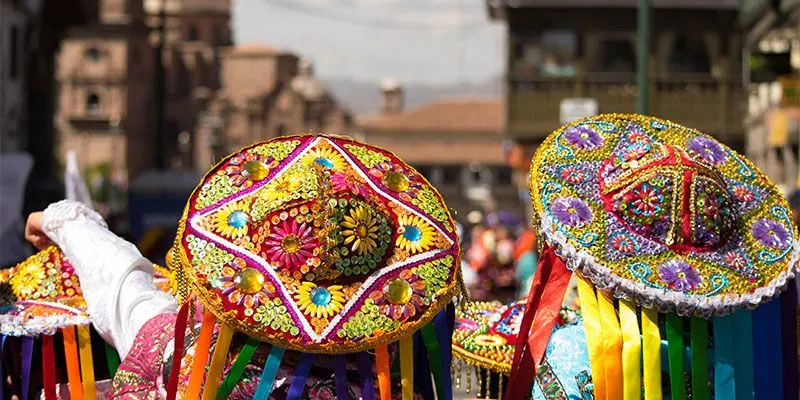
Understanding the Significance of Inti Raymi
The festival of Inti Raymi is more than just a grand spectacle; it is a deeply spiritual event that reflects the worldview of the ancient Inca civilization. The Incas believed in a close relationship between humans, nature, and the divine. They worshipped a pantheon of gods, with Inti, the sun god, at the helm. The festival of Inti Raymi was a way for the Incas to express their gratitude to Inti for his blessings and to seek his favor for the coming year.
The timing of Inti Raymi, at the winter solstice, is also significant. The solstice marks the shortest day of the year, after which the days start to get longer. For the Incas, it was a time of rebirth and renewal, a time to prepare for the new agricultural cycle. The rituals performed during Inti Raymi were meant to ensure the fertility of the land and the abundance of the harvest.
Moreover, Inti Raymi was a means for the Inca rulers to assert their divine lineage and their authority over the empire. The Sapa Inca, considered a direct descendant of Inti, played a central role in the festival. By performing the rituals and making offerings to Inti, the Sapa Inca demonstrated his spiritual power and his connection with the divine.
Customize Your Dream Vacation!
Get in touch with our local experts for an unforgettable journey.
Plan Your TripThe Traditional Rituals of Inti Raymi
The traditional rituals of Inti Raymi were elaborate and meticulously planned. The festival lasted for nine days, with different activities each day. The most important day was the winter solstice, when the main rituals were performed.
The celebrations began with a procession from the Coricancha to the main square of Cusco. The Sapa Inca, carried on a golden throne, led the procession, followed by the nobles and priests. The common people, dressed in their finest clothes, lined the streets to watch the spectacle.
At the main square, the Sapa Inca performed the most sacred ritual of Inti Raymi - the sacrifice of a llama. The heart of the llama was offered to Inti, while its blood was used to predict the fortunes of the coming year. This was followed by prayers, dances, and songs in honor of the sun god.
The festival ended with a grand feast, where food and chicha (a traditional corn beer) were shared among the participants. The feasting continued for several days, turning the city of Cusco into a hub of merriment and revelry.
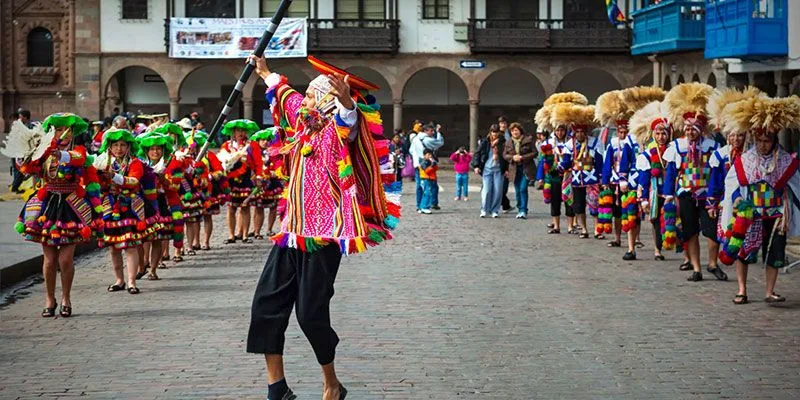
How Inti Raymi is Celebrated Today
Inti Raymi has adapted to the modern age, but it has retained its traditional spirit and cultural significance. The festival is now a major tourist attraction, drawing visitors from around the globe to the city of Cusco. The celebration is a blend of ancient rituals, theatrical performances, and folkloric dances, showcasing the rich cultural heritage of the Inca civilization.
The main event of the festival is a reenactment of the ancient rituals, performed at the archaeological site of Sacsayhuaman, just outside Cusco. Actors, chosen for their resemblance to the historic figures, play the roles of the Sapa Inca, his wife, the nobles, and the priests. They wear costumes that replicate the attire of the Inca elite, complete with feathered headdresses, gold and silver jewelry, and brightly colored tunics.
The reenactment follows the traditional sequence of rituals, from the procession to the sacrifice, albeit with a replica of a llama. The event concludes with a dance performance, in which hundreds of performers, representing different regions of the Inca Empire, take part.
Aside from the reenactment, Inti Raymi is marked by a series of cultural activities, including music concerts, art exhibitions, and gastronomic fairs. These events provide a platform for local artists and artisans to showcase their talent and for visitors to experience the diverse flavors of Peruvian cuisine.
The Role of Inti Raymi in Inca Culture
Inti Raymi holds a special place in the cultural identity of the Inca people. It is a symbol of their resilience and their enduring connection with their ancestral roots. Despite centuries of colonization and cultural assimilation, the festival of Inti Raymi has survived, serving as a link between the past and the present.
In a broader sense, Inti Raymi is a reflection of the indigenous worldview, which values harmony with nature and reverence for the divine. The festival is a reminder of the wisdom of ancient cultures, which understood the interdependence of all life forms and the importance of maintaining a balance with the natural environment.
Moreover, Inti Raymi is a celebration of community and unity. It brings together people from different walks of life, fostering a sense of shared heritage and mutual respect. It is an occasion for the Inca people to reaffirm their cultural identity and pass on their traditions to the younger generations.
Experiencing Inti Raymi: What to Expect
Attending Inti Raymi is a unique cultural experience, unlike any other. The festival is a sensory feast, with a riot of colors, sounds, and smells that create an atmosphere of excitement and wonder.
The highlight of the festival is the reenactment of the ancient rituals. Watching the actors in their regal costumes, performing the sacred rites with solemnity and reverence, one can get a glimpse of the grandeur of the Inca civilization. The theatrical performance is followed by a vibrant display of traditional dances, accompanied by the rhythmic beats of drums and flutes.
Throughout the festival, the city of Cusco is abuzz with activities. The streets are filled with vendors selling traditional crafts, food, and drinks. There are music concerts, art exhibitions, and parades, adding to the festive mood.
However, Inti Raymi is not just about fun and entertainment; it is also an opportunity to learn about the Inca culture and history. Visitors can explore the archaeological sites of Cusco and the Sacred Valley, visit the museums, and interact with the local people to gain a deeper understanding of the Inca civilization.
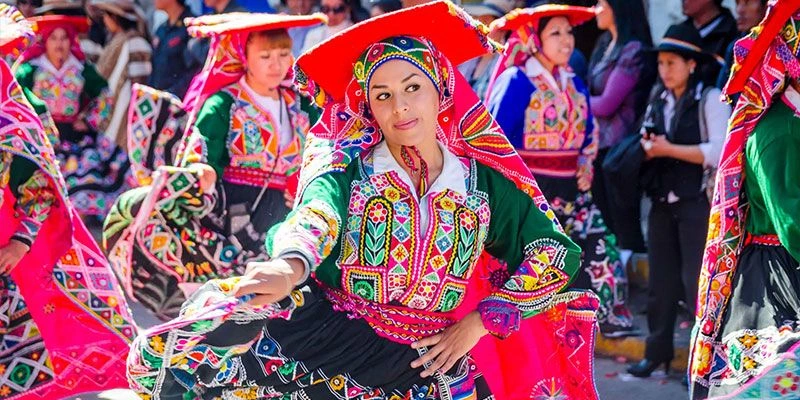
Best Places to Experience Inti Raymi
The city of Cusco, the ancient capital of the Inca Empire, is the best place to experience Inti Raymi. The main event of the festival, the reenactment of the rituals, takes place at the Sacsayhuaman archaeological site, which offers a panoramic view of the city.
In Cusco, visitors can also explore the Coricancha, the Temple of the Sun, where the original Inti Raymi was held. The temple, now a museum, houses a collection of Inca artifacts and a replica of the golden sun disc that was worshipped during the festival.
For those who wish to experience Inti Raymi in a more rural setting, the town of Ollantaytambo, in the Sacred Valley, is a good option. The town hosts its own version of Inti Raymi, with local residents taking part in the rituals and dances.
Another place to experience Inti Raymi is the city of Cuenca, in Ecuador. The festival here is marked by a parade of dancers, musicians, and actors, dressed in traditional Inca costumes. The parade ends at the Ingapirca archaeological site, where a ceremony in honor of the sun god is held.
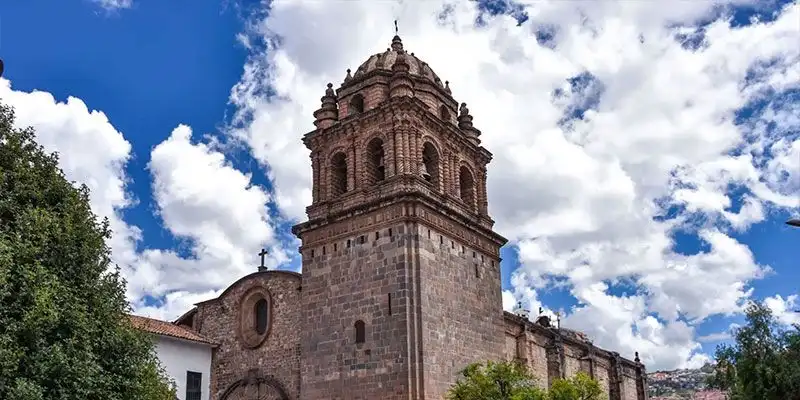
Travel Tips for Attending Inti Raymi
For those planning to attend Inti Raymi, here are some travel tips to make the most of the experience:
- Book your accommodations in advance: Cusco gets crowded during Inti Raymi, so it's advisable to book your hotel or guesthouse well in advance.
- Dress appropriately: The weather in Cusco can be unpredictable, with sunny days and chilly nights. Bring layers of clothing, a hat, and sunscreen to protect against the sun.
- Stay hydrated: Cusco is at a high altitude, which can cause altitude sickness. Drink plenty of water and take it easy on the first few days to acclimate to the altitude.
- Respect the local customs: Inti Raymi is a sacred event for the Inca people. Be respectful during the rituals and ask for permission before taking photos.
- Hire a guide: A local guide can provide valuable insights into the history and significance of Inti Raymi. Plus, they can help navigate the crowds and find the best spots to view the festivities.
The Lasting Impact of Inti Raymi
Inti Raymi, the Inca Festival of the Sun, is a vibrant testament to the enduring legacy of the Inca civilization. It is a celebration of the sun god, a homage to the ancestral roots, and a reaffirmation of the cultural identity of the Inca people.
Despite the passage of time and the changes brought by modernity, Inti Raymi continues to be a significant part of the cultural fabric of Peru. It is a reminder of the wisdom of the ancient cultures, which understood the importance of maintaining a balance with nature and of the value of community and unity.
For travelers, attending Inti Raymi is an opportunity to immerse themselves in a unique cultural experience, learn about the Inca history and traditions, and witness the vibrant spirit of the Inca people. As you plan your Peru vacations, you should consider timing your visit to coincide with Inti Raymi, the glorious festival of the sun. It is an experience that will leave you with lasting memories and a deeper appreciation of the rich cultural heritage of Peru.

